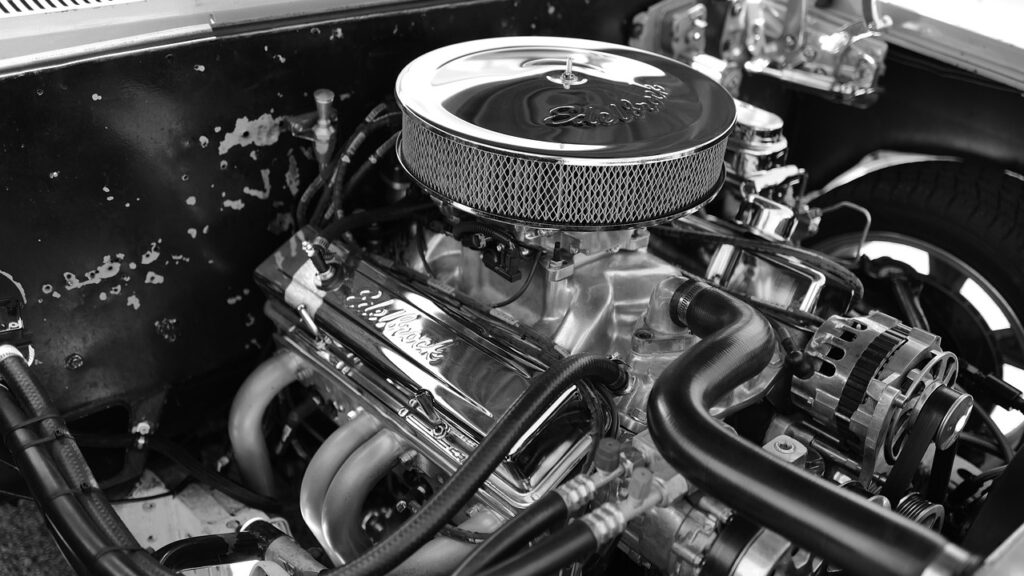Tesla has set the EV industry on fire with the unveiling of its latest motor technology. With advancements like the interior permanent magnet synchronous reluctance motor, carbon-wrapped Plaid motor, and flatwire winding, Elon Musk is pushing efficiency, power, and performance to new heights. But what exactly is Tesla solving, and how does this new motor set a new benchmark for electric vehicles?
Let’s dive into the details of this game-changing innovation.
How Does the Permanent Magnet Synchronous Motor Surpass Tesla’s Earlier Induction Motor?
Tesla’s shift from induction motors to permanent magnet synchronous motors (PMSMs) marked a pivotal leap in EV technology. Let’s take a closer look at the transition.
Tesla’s Early Induction Motors:
- Tesla’s early models, such as the 2008 Roadster, featured three-phase AC induction motors based on the Lotus Elise design.
- Power: 185 KW
- Maximum speed: 14,000 RPM
- Torque: 430 Nm
Induction motors offered high power density and acceleration, but at the cost of reduced efficiency at low and medium speeds.

The Shift to Permanent Magnet Motors:
In 2014, Tesla introduced copper rotor cage technology, enhancing the power and efficiency of induction motors. This advancement allowed the Model S Plaid to achieve breathtaking acceleration—reaching 100 km/h in just 2.1 seconds.
However, induction motors still had limitations, especially in mass-market models like the Model 3. Despite this, Tesla continued using them for cost and reliability reasons. Unlike permanent magnet motors, induction motors are more affordable and reliable, but less efficient at lower speeds.
Tesla’s innovation came when they started incorporating permanent magnet synchronous motors in the third-generation drivetrains in the Model 3 and Model Y, significantly improving efficiency and range.
What’s New in Tesla’s Motor Technology?
Tesla’s latest motor technology features several groundbreaking designs that take performance to the next level.
Carbon-Wrapped Plaid Motor:
Tesla’s Plaid motor is a game-changing leap in electric drivetrain design. The key innovation lies in the use of carbon fiber winding around the rotor, addressing thermal expansion issues and enabling extreme rotational speeds.
Key Benefits:
- Stronger electromagnetic field compared to traditional steel-encased rotors.
- Higher revolutions per minute (RPM) while maintaining structural integrity.
- Capable of unparalleled power and efficiency while being compact.
Elon Musk has referred to the Plaid motor as arguably the most advanced motor on Earth. Tesla is already working on an even more powerful version for the Next Generation Roadster.
Flatwire Winding Technology:
Tesla further revolutionized motor technology with the introduction of flatwire winding in the 2022 Tesla Model 3. Transitioning from round wire coils to flatwire coils has resulted in:
- Higher power and torque densities.
- Significant reduction in heat generation.
- Enhanced power density of 4.4 kW per kg.
With this flatwire motor, Tesla has achieved improved thermal efficiency and reduced energy losses, allowing for better overall performance.
Oil Cooling Technology for Enhanced Performance
Tesla has enhanced motor performance with the switch from water cooling in earlier models to oil cooling in the Model 3. This advancement has improved thermal management and power density.
- Water cooling only cools the motor casing, while oil cooling targets both the stator and rotor for superior efficiency.
- This shift has allowed Tesla to overcome thermal limitations, unlocking greater performance.
What Motor Configuration Can Truly Balance Performance and Power?
The Interior Permanent Magnet Synchronous Reluctance Motor:
Tesla’s breakthrough design is the interior permanent magnet synchronous reluctance motor (IPMSRM), which combines the compactness and efficiency of permanent magnets with the engineering brilliance of reluctance motors.
Key Features:
- Perfect for mass-market vehicles like the Model 3, which prioritize efficiency and range over extreme torque.
- The motor combines permanent magnets with magnetic reluctance for torque generation.
Despite its advantages, this motor has some challenges, including demagnetization and magnet degradation due to high temperatures and heavy vibrations. However, Tesla has addressed this by embedding neodymium iron boron magnets inside the rotor, reducing the risks of magnet detachment and enhancing the motor’s durability.
Conclusion: Tesla’s Motor Innovation: A Game-Changer in the EV Industry
Tesla’s new motor technology is a testament to cutting-edge innovation. With advancements like flatwire winding, oil cooling, and the carbon-wrapped Plaid motor, Tesla continues to redefine what’s possible in electric vehicle performance, efficiency, and reliability.
As the EV industry continues to evolve, these technologies will drive revolutionary transformations in the world of electric cars. Which of these innovations excites you the most? Let us know in the comments below.
FAQ
Tesla has introduced several cutting-edge motor technologies, including the interior permanent magnet synchronous reluctance motor, carbon-wrapped Plaid motor, and flatwire winding technology. These advancements focus on improving efficiency, power, and performance in electric vehicles.
Tesla’s new permanent magnet synchronous motors (PMSMs) are more efficient, especially at low and medium speeds, compared to older induction motors. They are also lighter, more compact, and reduce energy losses, offering better overall performance in Tesla’s newer models like the Model 3 and Model Y.
Induction motors, while offering high power density and acceleration, have lower efficiency at low speeds and can overheat under certain conditions. Permanent magnet motors, on the other hand, offer greater efficiency, especially at low speeds, and are better suited for mass-market EVs like the Model 3.
The carbon-wrapped Plaid motor is a revolutionary motor that uses carbon fiber winding around the rotor to improve thermal efficiency and rotational speeds. This allows the motor to achieve higher revolutions per minute (RPM) while maintaining structural integrity and power.
Tesla’s flatwire winding technology increases power density and torque output by replacing traditional round wire coils with flatwire coils. This design reduces heat generation, improves thermal efficiency, and helps boost overall motor performance in vehicles like the Model 3.
Tesla transitioned from water cooling to oil cooling in the Model 3 to improve thermal management. Oil cooling directly targets both the stator and rotor, providing superior cooling efficiency and allowing the motor to perform better under high power output.
Read More:


1 thought on “2025 Tesla All-New Motor Finally Hit The Market: Elon Musk Reveals”